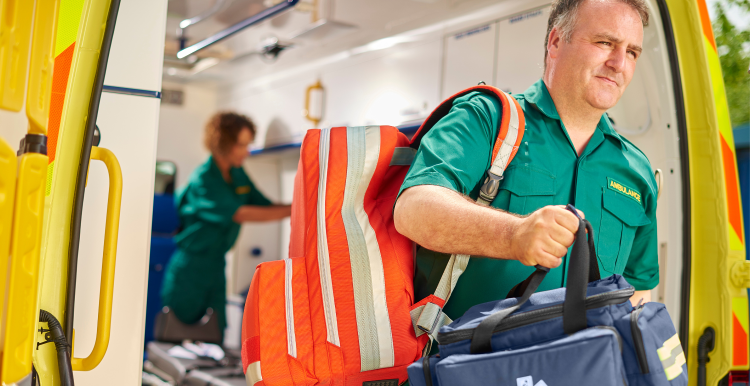Our position on urgent and emergency care

Summary
Urgent and emergency care services are currently under intense pressure. Our latest research shows public confidence in urgent care has fallen over the course of the pandemic. People are still fairly confident they will receive high-quality care, but worry they will have to wait too long to get it.
While longer-term system solutions to workforce and funding challenges are developed, we’re calling on performance targets that are better aligned to what matters most to people.
NHS 111 First also has the potential to improve people’s experiences if issues in the services are ironed out.
Our evidence
Negative feedback about urgent and emergency care is rising
Over the last 18 months the number of people contacting us about urgent care services has significantly increased.
Feedback is largely negative, and negative sentiment is growing. 62% of feedback we received about urgent and emergency services in August 2022 was negative, compared with 42% in December 2021.
A&E targets don’t show the whole picture
Back in 2020, we fed into NHS England's Clinical Review of Standards in Urgent and Emergency Care by finding out what matters most to the public when it comes to A&E.
This work showed that a single national target does not always give people enough information about what matters most to them. Although overall waiting times are important to people, it is often more important for people to be seen quickly for an initial assessment, feel confident that they will be treated more quickly if they have a more urgent issue, and understand how long they will have to wait.
NHS 111 First has the potential to improve people’s experiences
In 2021, we commissioned national polling and gathered views from the Healthwatch network about how the new NHS 111 First service was working. This service allows NHS 111 to pre-book a time slot for people attending their local A&E.

People told us that when NHS 111 supports them and meets their needs, they are happy with the service and feel it improves their experience. But there continues to be low awareness of the service, a lack of consistency in the support people receive, and lack of confidence in call handlers.
Public confidence in urgent and emergency care has fallen
In September 2022, we published the findings of national polling assessing public confidence in urgent and emergency care services.
Key themes from this recent work include:
- People’s confidence in urgent and emergency care has fallen.
- People were significantly less confident that services would see them in a reasonable timeframe.
- Older people were particularly concerned about waiting times in A&E and for ambulances.
- However, people who received care for life threatening illness and/or injury were still confident in the quality of care they received.
- Media stories of poor performance in A&E are a key driver of people’s falling confidence, although many people also changed their views based on personal experience
What we’re calling for
To improve people’s experiences of urgent care services while longer-term system solutions to workforce and funding challenges are developed, we want to see:
- Performance targets that are better aligned with what matters most to people. Urgent and emergency care targets were comprehensively reviewed two years ago, and recommendations were made for a basket of measures, including in areas which we know are priorities for patients – e.g. a target for a maximum time to initial assessment. Rolling out some of these additional measures would set more accurate expectations for patients.
- Better information for patients on what they can expect when they go to A&E. As part of the clinical review of standards, live online updates on average waiting times at different A&E departments were trialled at some sites. We would like to see this rolled out nationally, to help people choose the best service to visit and help set expectations for people before arriving in the department. This could also encourage patients to try using alternative services first.
- Better consistency in the application of the NHS 111 First approach to pre-booked time slots in A&E. This could greatly improve patient experience of navigating urgent and emergency care services and would help emergency departments better manage patient flow.
What action we’ve taken
Many of our suggestions were reflected in the final recommendations of the Clinical Review of Standards. These include the introduction of a new maximum time to initial assessment, a measure for extremely long waits, and splitting out measures for admitted and non-admitted patients.
Following the publication of our research, NHS England announced trialling a new "call first" model for A&E, with our work cited as a major factor driving the initiative. Similarly, we called for and supported pilots making live A&E waiting times available to patients in departments and online.
We are continuing to advocate for a wider roll-out of these tools, and for additional performance measures to be officially adopted across the NHS.
Following the national roll-out of NHS 111 First, concerns raised by local Healthwatch led to a clarification from NHS England of how those with pre-booked time-slots should be prioritised against A&E walk-ins, and that no one without a pre-booked time slot will ever be turned away. NHS England also promised to conduct a full patient evaluation of how the NHS 111 First programme is working.


